Positive Scenario II
Benjamin L. SelfJapan hosted the G20 Osaka Summit at the end of June 2019, and the world promptly forgot about it and moved on. That is not a failure, at least by the standards of such events. When evaluating whether Japan—and by extension Prime Minister Abe—succeeded in Osaka, it is vital to be reasonable and keep in mind what is possible and impossible in such circumstances. The only memorable G20 summit was the first one, and that by virtue of its coming into existence as much as any particular success of policy coordination among the attendees.
Convening amid intensifying trade conflict and a steep decline in motivation for collective action, the member states (and European Union) were able to make some concrete steps toward solutions on several matters, and—more importantly—avoid a breakdown similar to the one at the 2018 G7 summit in Canada, where for the first time ever the summit concluded without a joint statement. The recent G7 summit in France is no less a case in point. Based on these experiences in the more homogeneous G7 setting, we know what failure can look like.
Another constraint, which we should keep in mind, is that no G20 host country is acting alone, as there is a three-year team composed of the prior year, current year, and following year host country governments. This system ensures that the baton is never dropped during the transition by ensuring three hands are on it at once, but that leaves less control for any one party. All these excuses might make it seem that Japan underperformed as G20 host, but in fact it was remarkably successful, despite headwinds. The chief diplomat responsible for the G20, Ambassador Tomita Koji, shared his assessment that the Osaka summit deserved an A grade.1 Small but meaningful outcomes in the key areas of focus, as well as a broader reaffirmation of shared goals across the global community, deserve recognition.
On environmental protection, Japan set an admittedly low bar by avoiding controversial aspects such as climate change in favor of building consensus on steps to reduce marine plastic pollution. Still, the marshaling of 19 national governments and the European Union is never a simple matter, so Japan deserves credit for the agreement.2
Another pillar of Japan’s ambition for the G20 was to establish universal norms for quality infrastructure, with attention to life-cycle cost and especially debt sustainability. This was quite transparently aimed at China’s Belt and Road Initiative (BRI), a massive push by the PRC to extend its decades-long infrastructure investment boom overseas. This was partly a matter of an overcapacity brought about by the huge growth of the Chinese construction sector, and as with many projects within China it was often the supply push rather than the demand pull that provided the main impetus. Many countries are familiar with the problem of excessive dependence on public works, creating “bridges to nowhere” in order to provide jobs and contracts. Extending loans for such projects in other countries while requiring the contracts go to Chinese firms and the jobs to Chinese workers certainly created unease among international development specialists and among local recipient communities.
One point of concern centered on the construction standards, materials, and durability of the infrastructure being built by the Chinese. It was feared that countries might be paying back loans for longer than they could be benefiting from the infrastructure the loans had bought. In the case of the BRI there has also been deepening concern about unsustainability of the overall level of indebtedness that developing country governments were taking on. There was widespread outcry over the prospect of ports in Sri Lanka and Kenya being taken over by China because the debt burden associated with them was too heavy for the borrowers to bear. These cases have been even more worrying as the ports are potentially linked to PLA Navy ambitions for a “string of pearls” collection of military bases across the Indian Ocean. Some analysts argue that the BRI was already losing steam as China began to develop greater concerns about return on investment amid capital flight. This may help explain why Japan was able to include “quality infrastructure” as an item on the agenda and produce an agreement on the issue.3
Third, but probably at the top of Japan’s priority list for the G20, was launching the Osaka Track of multilateral trade negotiations on the digital economy. The prospects were not bright for building a consensus among all the diverse interests, given the schisms not only between developed and developing economies but within each group. Notably, China and the EU both seek to exert a great deal of government control over digital trade, but from divergent positions with regard to state versus citizen interests. Furthermore, the taxation of e-commerce had emerged as a divisive issue, with some countries such as France threatening to take unilateral steps to address the loopholes that allow huge companies like Amazon to avoid paying taxes proportionate to the scale of their economic activities. What Japan achieved in hosting the G20 (through trade and finance ministerials as well as in Osaka) was to forestall any unilateralism and build a commitment to a collective solution, still unknown, but the countries set a timeline for reaching one, and also established the boundaries within which negotiations will proceed.
As noted in the prior essay, the Osaka Track is meant to be a gradual process of aligning policies to support the growth of digital trade. Japan will assert its leadership as a relatively middle-ground country to allow for reasonable regulation of Internet and e-commerce behemoths while striving to enhance “data free flow with trust” that will be key to future dynamism in the sector. It bears mentioning that the Osaka Summit Leaders’ Declaration paragraphs 10, 11, and 12 cover this issue in a striking level of detail, especially in what are usually fairly anodyne statements of the vaguest general agreement hedged with various cautious limiting remarks.4
The issue of governance of the digital economy is especially suitable for a deeper exploration of Japan’s basic approach to intergovernmental and global affairs, to lead to an understanding of how it creates success in summit diplomacy—and why it sometimes seems to punch below its weight. Three characteristics of Japanese political culture are relevant: 1) it is pluralistic; 2) it is rule-bound; and 3) as a result of the first two, it relies heavily on consensual decision-making. Thus, it would be wrong to focus on Abe and his personal agenda in examining the G20 outcomes, and much better to consider the Foreign Ministry, and the governmental bureaucracy as a whole, as the driving force.
While Abe has been portrayed as trying to rewrite the rules and break out of the constraints of consensus-based policymaking, he has in fact revealed the durability of these aspects of Japanese politics in failing to push any unpopular or extreme policies. Where his aims have not achieved consensus, as in revision of the Constitution, he has not been able to proceed with a change—despite weak political opposition forces and little organized resistance within his ruling LDP. Given that Japanese political culture involves a large degree of consultation and prior-negotiation, not only legislators but especially government officials become adept at the daily work of providing briefings and sharing the framework of any new policy initiatives. This nemawashi is a standard practice across all Japanese organizations—governmental, corporate, or non-profit. These skills make Japanese diplomats well-suited to international, bureaucratic negotiations, where habits of taking agreed-upon baby steps yield powerful results over time.
The converse is that when confronted with extreme situations, shocks, and rule breaking, the Japanese often have a tough time responding effectively. The default is often to resort to whatever plan is on the shelf, as the laborious process of coordinating responses to an emerging situation will simply take too long in a crisis. Overall, political culture predisposes Japan to a diplomacy that prioritizes institutional processes within bounded parameters and a high degree of predictability, which for the most part is the nature of summits like the G-20.
We have seen that Japan struggles when challenged by approaches that violate expectations and norms, famously in response to the Iraqi invasion of Kuwait but more recently as well, whether Chinese “gray-zone” activities in the East China Sea or President Trump’s willingness to use Section 232 National Security Tariffs to slash exports by the Japanese auto industry. This weakness of the Japanese system is part of the reason that successive governments have striven to enhance the decision-making authority of the Cabinet and in particular the prime minister’s office (kantei), allowing for rapid response and also for breaking through the inflexible network of pluralistic interests that have historically caused policy stagnation through veto power. The political genius of Tanaka Kakuei in the late 1960s into the 1980s was to bring more disparate interests into the fold of LDP support, depriving the socialist opposition of backers even as the population shifted from conservative rural and agricultural sectors into urbanized consumer and industrial labor. The upshot of this was a dominant majority through the end of the Cold War, which was at the same time a coalition of interests too all-inclusive to allow for major reform.
This background of domestic politics explains the radical efforts of the Koizumi era—when the leadership attacked the LDP to save the LDP—and the swing toward the DPJ in the late 2000s. After the DPJ failed to build a stable and sustainable model for new policy leadership, Abe returned with an Abenomics agenda of Three Arrows, the third of which, Structural Reforms, can be understood in this context. The idea was to chip away at some special interests that had encrusted themselves to the ruling coalition, and to force a system with greater rewards for winners (and less cushion for losers). What should be understood in this context of Japanese diplomacy is how limited the power of the kantei remains and how the relative failure of Structural Reform has revealed that. In other words, painting Abe as all-powerful is a profound mischaracterization of a Japanese system in which power remains limited by political checks and balances both formal and informal.
1. See his remarks on video at: https://www.csis.org/events/g20-osaka-debrief-what-so-what-now-what
2. The joint Leader’s Declaration states: “We reiterate that measures to address marine litter, especially marine plastic litter and microplastics, need to be taken nationally and internationally by all countries in partnership with relevant stakeholders. In this regard, we are determined to swiftly take appropriate national actions for the prevention and significant reduction of discharges of plastic litter and microplastics to the oceans. Furthermore, looking ahead beyond those initiatives and existing actions by each member, we share, and call on other members of the international community to also share, as a common global vision, the “Osaka Blue Ocean Vision” that we aim to reduce additional pollution by marine plastic litter to zero by 2050 through a comprehensive life-cycle approach that includes reducing the discharge of mismanaged plastic litter by improved waste management and innovative solutions while recognizing the important role of plastics for society. We also endorse the G20 Implementation Framework for Actions on Marine Plastic Litter.” See “Full text of the G20 Osaka Leader’s Declaration,” Japan Times, June 29, 2019, https://www.japantimes.co.jp/news/2019/06/29/national/full-text-g20-osaka-leaders-declaration/#.XWMDAZNKjOQ
3. Ibid; “Infrastructure is a driver of economic growth and prosperity. We endorse the G20 Principles for Quality Infrastructure Investment as our common strategic direction and high aspiration. These emphasize that quality infrastructure is an essential part of the G20’s ongoing efforts to close the infrastructure gap, in accordance with the Roadmap to Infrastructure as an Asset Class. We stress the importance of maximizing the positive impact of infrastructure to achieve sustainable growth and development while preserving the sustainability of public finances, raising economic efficiency in view of life-cycle cost, integrating environmental and social considerations, including women’s economic empowerment, building resilience against natural disasters and other risks, and strengthening infrastructure governance. We look forward to continuing advancing the elements to develop infrastructure as an asset class, including by exploring possible indicators on quality infrastructure investment.”
4. Ibid

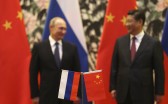
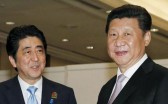

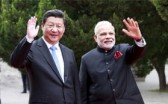

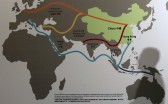


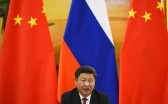

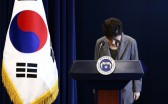

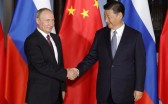

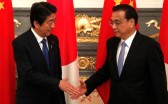
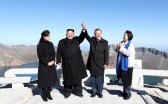

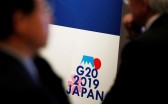

 Print
Print Email
Email Share
Share Facebook
Facebook Twitter
Twitter LinkedIn
LinkedIn